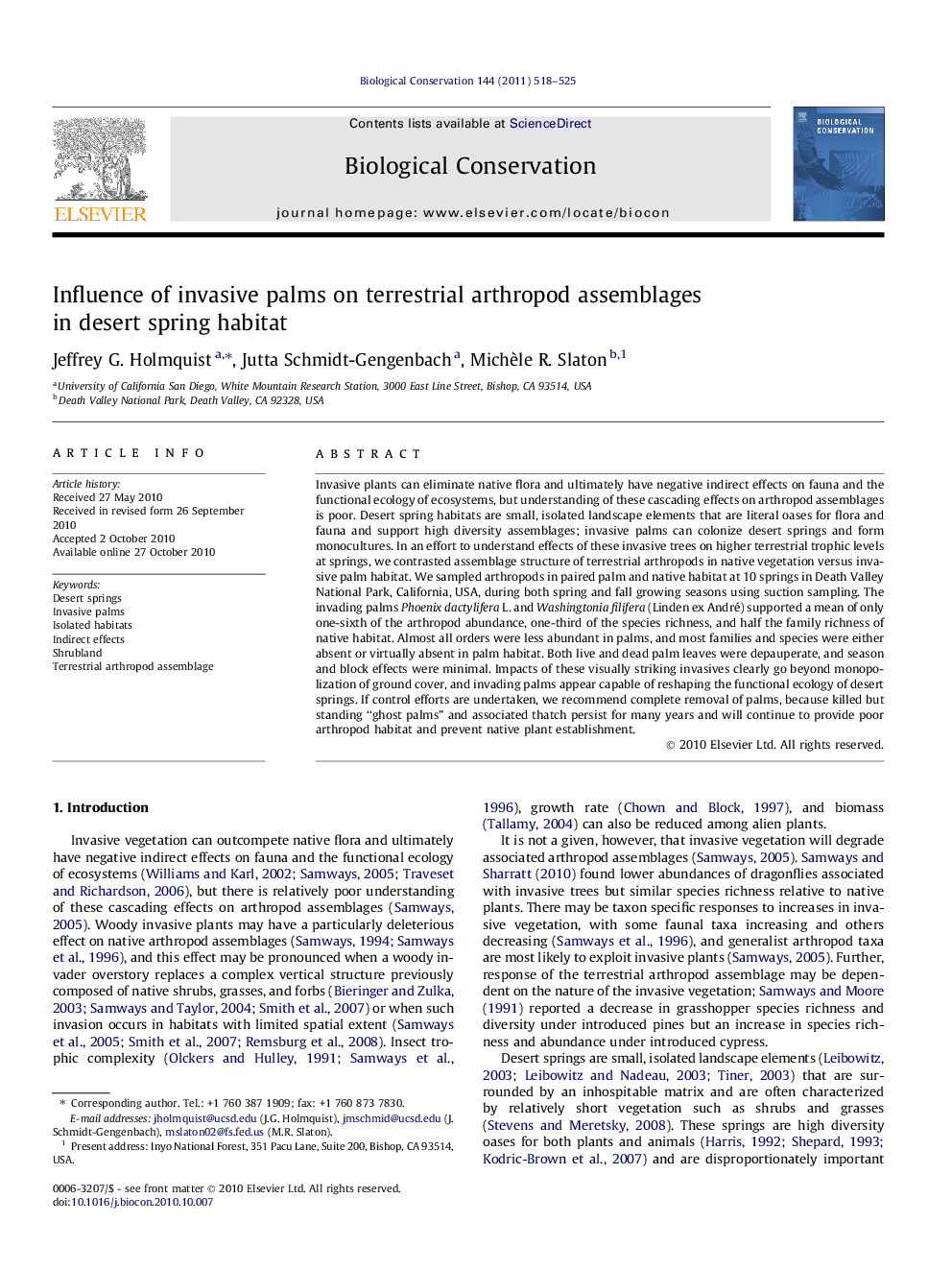| Article ID | Journal | Published Year | Pages | File Type |
|---|---|---|---|---|
| 4385713 | Biological Conservation | 2011 | 8 Pages |
Invasive plants can eliminate native flora and ultimately have negative indirect effects on fauna and the functional ecology of ecosystems, but understanding of these cascading effects on arthropod assemblages is poor. Desert spring habitats are small, isolated landscape elements that are literal oases for flora and fauna and support high diversity assemblages; invasive palms can colonize desert springs and form monocultures. In an effort to understand effects of these invasive trees on higher terrestrial trophic levels at springs, we contrasted assemblage structure of terrestrial arthropods in native vegetation versus invasive palm habitat. We sampled arthropods in paired palm and native habitat at 10 springs in Death Valley National Park, California, USA, during both spring and fall growing seasons using suction sampling. The invading palms Phoenix dactylifera L. and Washingtonia filifera (Linden ex André) supported a mean of only one-sixth of the arthropod abundance, one-third of the species richness, and half the family richness of native habitat. Almost all orders were less abundant in palms, and most families and species were either absent or virtually absent in palm habitat. Both live and dead palm leaves were depauperate, and season and block effects were minimal. Impacts of these visually striking invasives clearly go beyond monopolization of ground cover, and invading palms appear capable of reshaping the functional ecology of desert springs. If control efforts are undertaken, we recommend complete removal of palms, because killed but standing “ghost palms” and associated thatch persist for many years and will continue to provide poor arthropod habitat and prevent native plant establishment.
